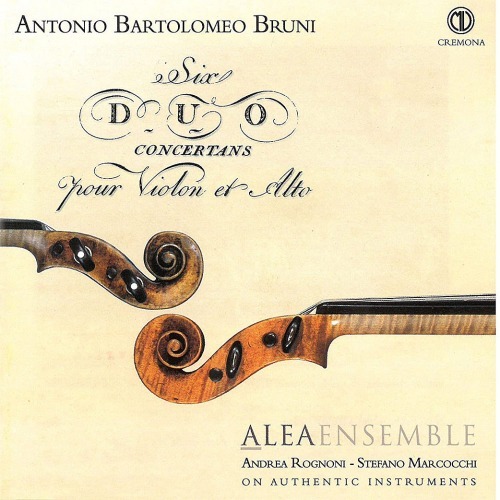Antonio Bartolomeo Bruni
| Compositor | Antonio Bartolomeo Bruni |
| Clase | Violin y Viola |
Disponible
Antonio Bartolomeo Bruni
The Six Duos concertans pour violon et alto
Andrea Rognoni: violin
Stefano Marcocchi: Viola
The genre of the Duo was extremely popular at the time, especially the duo for two violins, and since the 1720s many French composers had published collections of duos: Boismortier in 1725 and ’26, Leclair in 1730, and Corette in 1738. A real fashion for violin duos was started by Giovanni Pietro Ghignone (Guignon) and Jean-Baptiste Mondonville in 1745, when their great success at the Concert spirituel was imitated by many of the best French violinists (Gaviniés and Labbé among others).
Bruni’s production is very much part of this musical background, although it does present some interesting characteristics. The instrumental writing is a palpable demonstration of the composer’s technical prowess. Both instruments, which are treated as equals, are given many occasions to shine, and almost to compete with one another, as is proven by the abundant sharing of brilliant passagework, where identical phrases are repeated in alternation. All of the Duos in the present recording are in two movements, starting with a fast one, with the exception of the last two. These compositions present an inspired flow of melodic ideas which are very often repeated and varied: in some instances the variations give way, by means of thematic development, to new ‘themes’, but in general there doesn’t seem to be any kind of tendency towards an organized structuring of the thematic material, although there are instances of already stated themes which reappear at the end in the home-key. This might reflect the way in which Italian opera ouvertures of the time presented their themes. The second movements tend to be of the same length and importance as the first, even when they are a Tema con variazioni or a Menuet, as in the case of the second and third duos respectively. But leaving aside technical considerations, and reflections on the nature of these compositions, undeniably linked to economic concerns, it is difficult not to hear in Bruni’s generous and ardent melodies the Zeitgeist of these revolutionary times.











